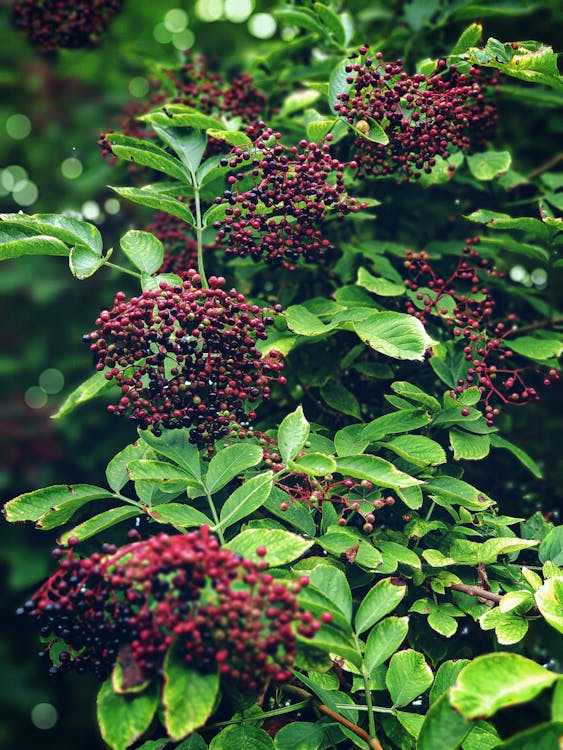
Elderberry
Sambucus nigra
Basic Information
🌿 Family: Adoxaceae🗺️ Zone: 3-10
Other Names:
- Black Elderberry
- European Elder
- American Elderberry (Sambucus canadensis)
🌡️ Ideal Temperature : 50°F – 80°F
🔥 Heat Tolerance: Up to 100°F
❄️ Cold Tolerance: Down to -30°F
🌱 Type: Perennial
Layers
- Shrub
Functions
- Edible
- Medicinal
- Pollinator
- Wildlife Attractor
- Dynamic Accumulator
- Erosion Control
- Windbreaker
- Border Plant
Pests
Description
Elderberry (Sambucus nigra) is a fast-growing, deciduous shrub reaching heights of 2–4 meters (6–12 feet). It produces clusters of small, fragrant white flowers followed by dark purple to black berries in late summer.
This hardy plant thrives in moist, well-drained soil and is commonly found along riverbanks, woodlands, and hedgerows. It is widely cultivated for its edible and medicinal uses, as well as its ability to attract pollinators and wildlife.
🌞💧 Sun and Water Requirements:
- Prefers full sun but tolerates partial shade.
- Requires moist, well-drained soil but can tolerate occasional drought.
- Benefits from deep watering during dry spells.
✂️🫘 Methods to Propagate:
- Seeds: Sow in fall or cold-stratify before planting in spring.
- Cuttings: Softwood cuttings in spring or hardwood cuttings in late winter root easily.
- Suckers: Can be propagated by transplanting root suckers.
🧑🌾👩🌾 When to Harvest:
- Flowers are harvested in late spring or early summer for teas and syrups.
- Berries are ready for harvest in late summer to early fall when fully ripe and dark purple-black.
- Only ripe berries should be used; unripe berries contain toxins.
Purpose
Elderberry serves multiple functions in a permaculture system:
- Edible: Berries are used in jams, syrups, wines, and medicinal tonics.
- Medicinal: Known for immune-boosting and antiviral properties.
- Pollinator: Flowers attract bees, butterflies, and other beneficial insects.
- Wildlife Attractor: Berries provide food for birds and small mammals.
- Dynamic Accumulator: Draws up nutrients like potassium and phosphorus.
- Erosion Control: Spreading roots stabilize soil on slopes and near water bodies.
- Windbreaker: Provides shelter and protection for delicate crops.
- Border Plant: Works well in hedgerows and naturalized landscapes.